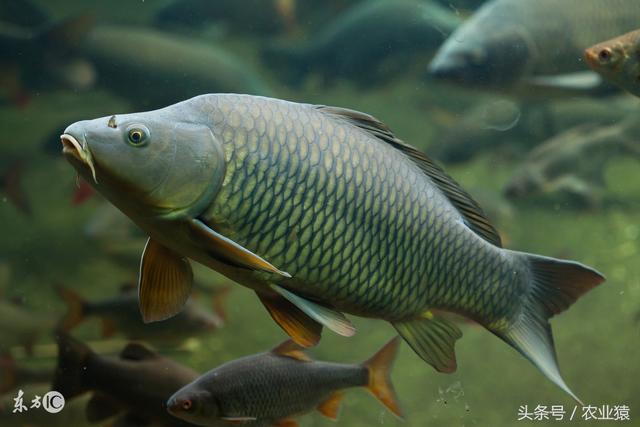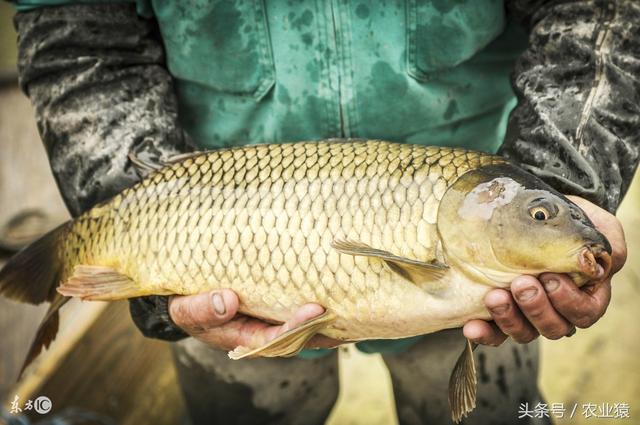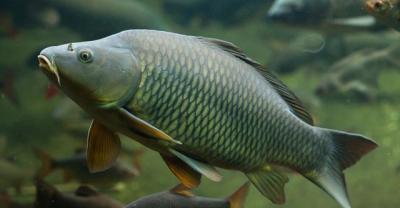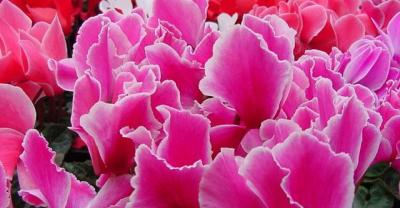Analysis on the present situation and Countermeasures of Carp Culture
1 Morphology and characteristics of carp
Carp belongs to Cyprinidae. Carp body is flat and plump, fusiform, up to 120cm in length. The body color varies according to different varieties, and the common ones are golden yellow, light red, orange and so on. Wild species are golden yellow, artificial culture fish back yellow green, yellow belly. So far, 39 excellent breeding varieties have been approved and published by the National Committee for the Examination and Approval of Aquatic Products. Among them, there are 15 excellent breeding varieties of carp, such as Hebao Red Carp, Xingguo Red Carp, Jian Carp, Hebao Red Carp cold resistant strain, German Mirror Carp breeding line, Feng Carp, Heyuan Carp, Trihybrid Carp, Ying Carp, Yue Carp, Furong Carp, German Mirror Carp, Scattered Scale Mirror Carp, Songpu Carp and Wan'an Glass Red Carp. Carp mainly inhabits at the bottom of aquatic bodies in rivers, lakes, reservoirs and ponds. Carp belongs to omnivorous benthos fish. Carp is larger and grows fast. It mainly feeds on algae, aquatic plants and benthos. Carp intestinal thin short, metabolism fast, rely on consumption of body fat in winter, basically in a state of fasting, spring warming needs to eat a lot of high protein food. In order to increase fat reserves before winter, they will eat a lot of high protein diet, and there will be a peak period of "catching food". Spring is the breeding period of carp every year. Carps often choose lush aquatic plants to lay eggs, and the eggs produced adhere to aquatic plants for development.
2 Current status of carp farming
The breeding environment is poor. Some carp farmers blindly pursue economic benefits, weaken scientific breeding consciousness, and do not care about the selection of fish species, breeding density, and medication, resulting in the decline of carp product quality and serious deterioration of water quality. Usually carp culture density should be controlled in every 667m water surface cast fry 1000~1500, but in the actual breeding process, farmers for economic benefits, breeding density will be higher than this standard, or even doubled, which causes the pond fry density is too large, feed put a large number, because farmers continue to increase stocking, feed put on the increase. Excessive feed is directly discharged into the water body without adequate absorption and digestion, and residues and feces sink to the bottom, resulting in anoxic environment at the bottom. Carp mainly moves in the bottom of the pond, and anoxic environment will adversely affect the growth of carp.
Fish diseases are difficult to treat. Carp farming in a variety of fish diseases frequent, such as rotten gill disease, scaly disease, enteritis, etc., these diseases are actually very easy to prevent, but often due to various subjective or objective reasons, so that its spread, resulting in very serious losses [2]. Fish ponds with poor water quality have a large number of pathogenic microorganisms, and it is not feasible to change the water as a whole, resulting in a higher incidence of fish diseases than usual. The usual treatment method of farmers is to sprinkle medicine directly into the fish pond. This not only fails to achieve the purpose of treating fish diseases, but also causes water pollution, exacerbates the probability of fish diseases, and more and more drugs are used for treatment. The breeding cost remains high. Such a vicious circle, the entire aquaculture water environment is destroyed.
The quality of fry varies. fry, as a highly profitable aquatic product in the breeding process, is favored by the vast number of farmers, and more and more farmers are engaged in fry and seedling production. At present, the fish seedling breeding market is chaotic, the quality is uneven, this is mainly because the breeders lack complete breeding technology, parent inbreeding, breeding disorder, regardless of good or bad, all under the banner of "high quality seedlings," resulting in large individual differences in the breeding process, seedling quality is not high, disease resistance is too poor, these problems will delay the healthy development of fisheries.
The farming is poorly managed. Because farmers in pursuit of higher economic benefits, increase the stocking of carp, in the feeding process, can not accurately grasp the feed dosage, the growth of fish adversely affected. Excessive feed, feed can not be fully digested and utilized by fish, not only lead to increased feeding costs, but also destroy the living environment of fish, resulting in water quality decline, breeding various pathogens, parasites, etc., posing a threat to fish. If the feed is insufficient, it will lead to insufficient fish intake and affect the normal growth of fish. Therefore, scientific and reasonable breeding is the most important thing for farmers to pay attention to.
3. Measures to Improve Economic Benefit of Carp Culture
According to the local environment, climate and market needs and other actual conditions, according to local conditions, select suitable for fine varieties for breeding. while popularizing fine varieties, we should persistently select seedlings, purify and rejuvenate as much as possible, improve the adaptability and disease resistance of varieties by improving the growth characteristics of varieties, and pay attention to improving the meat quality and taste of carp, so as to enhance the production value of carp and meet the needs of mass consumption. fishery management departments should strengthen management of all circulation links in the fry market and resolutely crack down on the sale of substandard and inferior fry.
Fishery technology popularization departments should intensify the popularization of technology and popularize scientific and rational breeding technologies and models. Guide farmers to put fry scientifically and moderately, feed scientifically, and select high-quality feed. High-quality feed has the advantages of rich nutrition, high utilization rate, low pollution of excreta, etc., which can not only improve feed utilization rate, but also slightly pollute water. Insist on the bottom of the fish pond treatment, use harmless treatment methods, reduce organic matter generation, at the same time increase the use of fishery machinery promotion, minimize the use of drugs, in order to avoid damage to the water body. Advocate pollution-free breeding concept, although pollution-free feed market price is high, but the price of aquatic products is relatively expensive, and the market demand is large, can ensure the profit space of farmers.
references
[1]Zhu Jian. A study on the breeding status and germplasm resources of carp [J]. China Fisheries, 2001 (3) :79
[2]generated. Common disease symptoms and control techniques of carp culture [J]. Heilongjiang Science and Technology Information, 2015 (25) :253.
Tang Jingwei. Analysis of carp culture status and countermeasures [J]. Modern Animal Science and Technology, 2018 (01):36.
[Solemnly declared] This article originated from Zhiwang, only for academic exchange, no intention to infringe any copyright, not for any commercial use, if you have any questions, please contact us, thank the author for providing new information for the industry.



- Prev

Culture methods and matters needing attention of Jian Lan
Jianlan, also known as Sijilan, Qiulan. It belongs to a large population of Guolan. Its flowers are light yellowish green and fragrant. Different from other kinds of orchids, its flowering period is longer and.
- Next

Decryption of red earthworms cultured in Taiwan
To explore the secret of Taiping No. 2, which is called "jianghu nickname". There are two kinds of Si, and there are three kinds in Taiping II, as mentioned above, everyone says that it is too.
Related
- On the eggshell is a badge full of pride. British Poultry Egg Market and Consumer observation
- British study: 72% of Britons are willing to buy native eggs raised by insects
- Guidelines for friendly egg production revised the increase of space in chicken sheds can not be forced to change feathers and lay eggs.
- Risk of delay in customs clearance Australia suspends lobster exports to China
- Pig semen-the Vector of virus Transmission (4)
- Pig semen-the Vector of virus Transmission (3)
- Five common causes of difficult control of classical swine fever in clinic and their countermeasures
- Foot-and-mouth disease is the most effective way to prevent it!
- PED is the number one killer of piglets and has to be guarded against in autumn and winter.
- What is "yellow fat pig"? Have you ever heard the pig collector talk about "yellow fat pig"?

